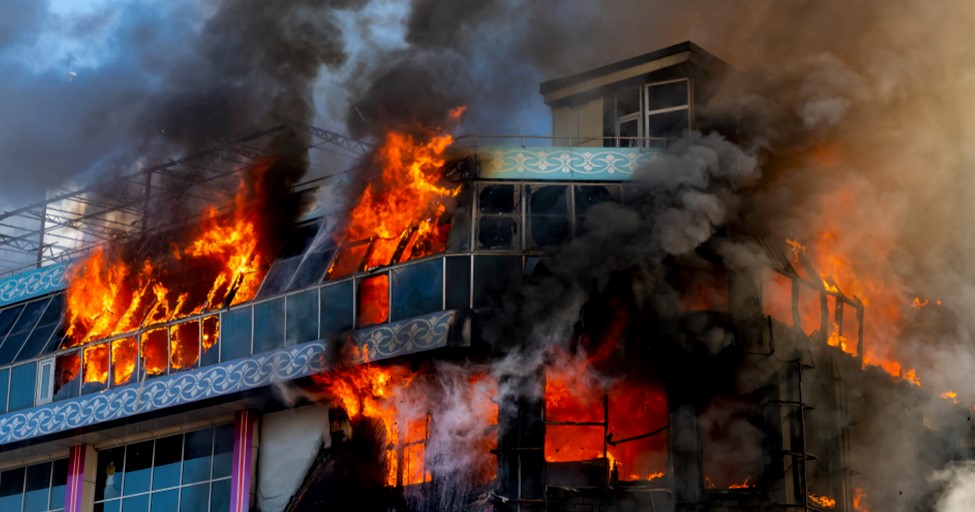According to global research, Australia’s bushfire season is 130 days per year. Due to climate change, the number of extreme fire weather days has jumped 56% in the past four decades, but there’s plenty you can do to minimise your risks as we enter another season.
Your commercial property doesn’t have to be in the country to face bushfire risks. Think of the pockets of native bush in our capital cities, even national parks within metropolitan borders.
Wherever you are, aim to have a bushfire readiness plan to protect your property and your people by following these simple tips.
Connect with your community and facts
Your local council and fire service would be a good starting point for community information about disaster planning and management. Check out this ABC News story about how three Victorian towns prepared for a fire evacuation drill. Know your risks regarding the ‘bush fire attack level’, or BAL, in your property’s area.
For reliable and up-to-date information, rely on trusted news sources. For instance, the ABC Emergency portal allows you to search any Australian location to find active incidents nearby. Also, refresh your understanding of fire danger ratings – they’ve just been revised nationally. Check your state’s version of the NSW ‘Fires Near Me’ app and the global Fire and Smoke Map.
Have an evacuation plan
Having a solid safety and evacuation plan is priceless. You might have heard of Rick Rescorla, the security director at a US investment firm who was based at the Twin Towers in New York. Pre-9/11, he insisted staff regularly undertake fire drill practice. He got much backlash for it but persevered. It meant only six of the company’s 2,700 team did not survive. Rick was among the dead – he’d returned to the premises to check if anyone was still left there. The principle remains the same for events such as bushfires.
Make sure your evacuation plan is bushfire ‘fit’:
Have a designated staff member who is known to the rest of your organisation. For identification, they should wear a different coloured hard hat or vest during your fire evacuation drills
List your evacuation routes, and the location of your muster points
Update your register of who has first-aid training and other key skills,
Select who’ll collect the emergency kit
Have contact details for all staff
Establish who will communicate to staff and visitors and how
Store business-critical documents in a fire-resistant safe
Ensure you check that fire exits aren’t blocked or, worse, locked
Update your inventory of assets and keep a copy off-site, which includes date-stamped images/videos of each room to build your evidence for insurance claims
Business Victoria has a handy list of last-minute preparations. To help staff familiarise themselves with your drills, try pacing them through a sample bushfire scenario.
Clear debris & vegetation
Clear 20 metres of vegetation and debris from around your commercial premises, as embers can start fires. According to the Bushfire Foundation, a burning ember can travel up to 40km and can be as hot as the fire from which it came.
Regularly check and clear your building’s roofs and gutters of debris. Beware of gaps where embers could enter your building. Air vents, air conditioning units, and even gaps around doors and windows are possible entry points you need to block.
Remember, your business is liable for fire hazards on your commercial premises that could increase bushfire risks.
Store flammable materials away from your building
After you’ve cleared vegetation from the perimeter of your commercial property, check for flammable materials in that zone. They include chemicals, gas cylinders, wooden pallets, etc. Store them separately at a safe distance away from the building. Follow Safe Work Australia’s guidance for storing flammable materials.
Ideally, you’ve ascertained how combustible is the external wall cladding on your building. If you’re in NSW, keep up to date with the NSW Cladding Taskforce, which aims to identify buildings at risk of having combustible cladding. It also supports local councils’ work addressing the use of non-compliant cladding materials.
Review your insurance cover
Before the bushfire season begins, check your policy with us to make sure it reflects your current property and asset value. Otherwise, you risk being underinsured. We’ll refresh and update you about policy changes and explain common exclusions and what’s included. For example, a typical policy may not cover you for heat, soot, smoke, or ash damage.
There may be a better-fit policy if your circumstances or current policy have changed. We’ll help make sure your commercial premises are appropriately protected.

